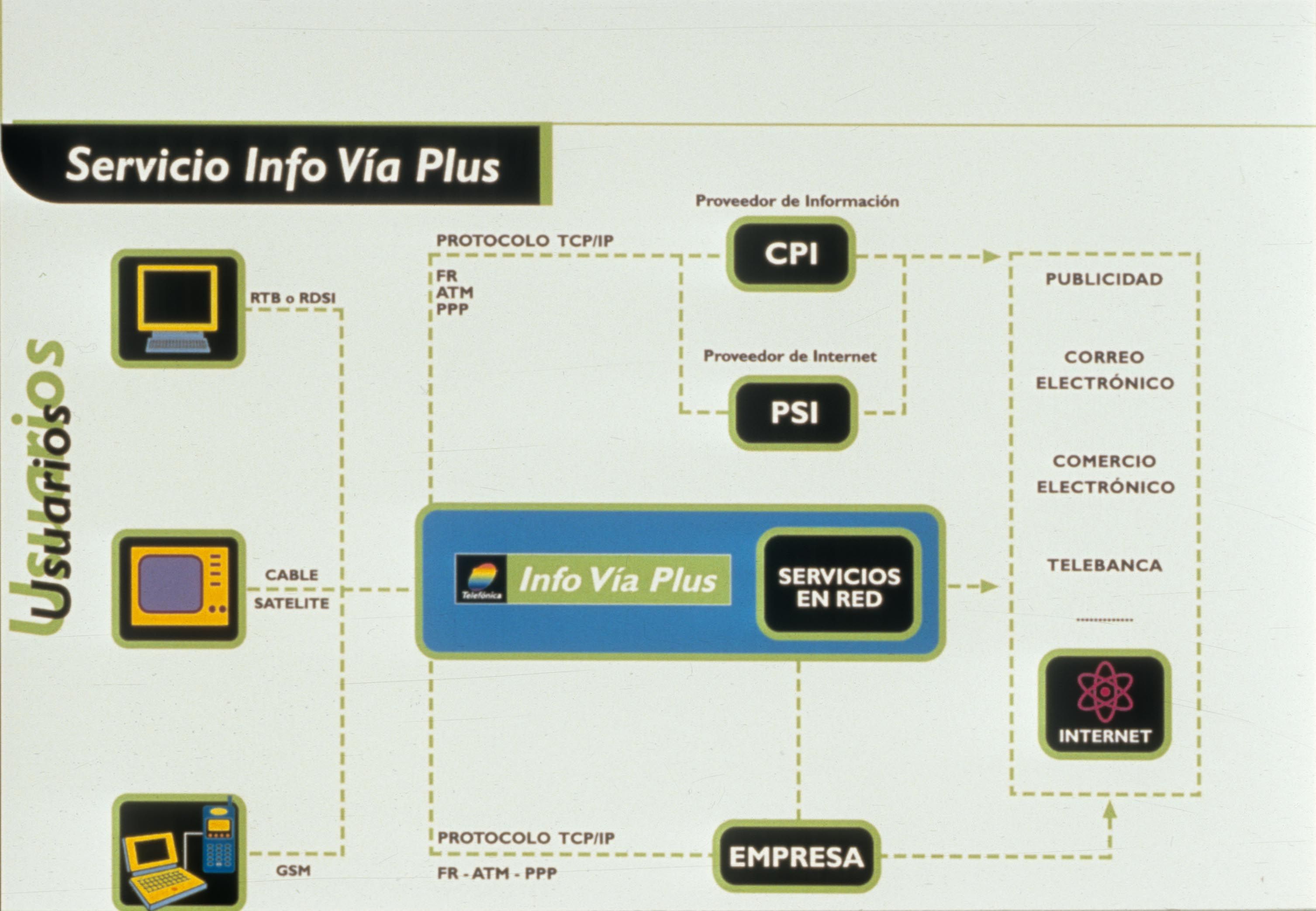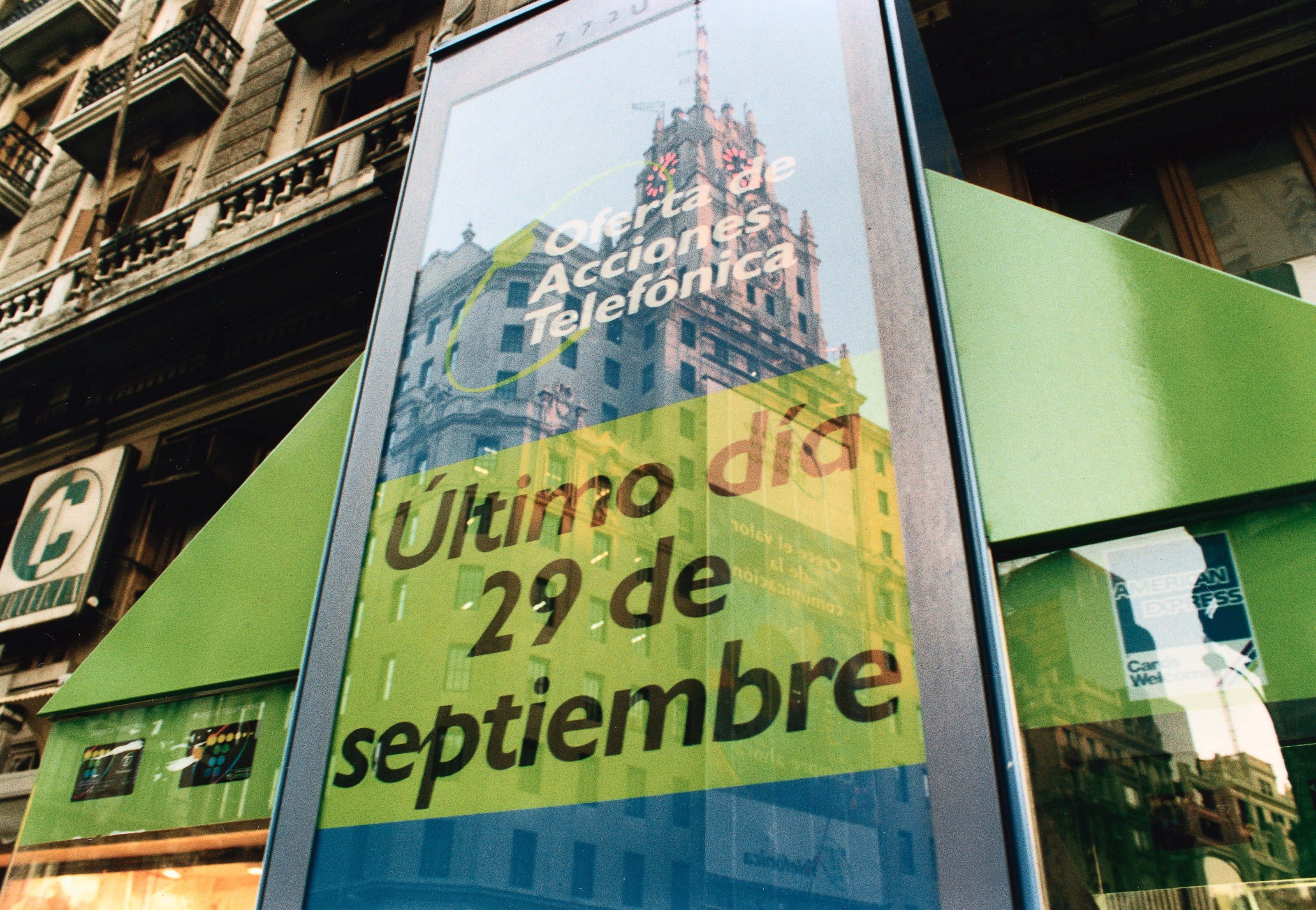
1995

It was the year of the revolution. The popularisation of the internet and mobile telephony, two independent phenomena that would later go hand in hand thanks to smartphones, changed everything forever.
We are living a double revolution: Internet and mobile phones
01
1995 is a pivotal year in Spanish telecommunications. It is the year in which the Internet and mobile revolution exploded at the same time, and Telefónica was to play a leading role in both. The impact on our lives could not be greater, two essential elements of our daily lives, both in the personal and professional spheres. Each of them deserves its own dedicated space.

Movistar: ‘A star is born’
02
At the end of 1995 Telefónica Móviles begins operating (in competition with Airtel) with GSM technology, the first digital mobile system, popularly known as 2G. GSM technology improved the quality of communication, brought SMS and SIM cards that allowed personalisation; identification of the calling number, roaming in other countries, among other great innovations. The commercial launch takes place in September and we are doing so with a brand new look: Movistar, which we launch in a major advertising campaign, 'A Star is Born', achieves unprecedented growth, and in one year we reach almost one million customers. This fresh, young brand was gaining presence and strength and fifteen years later it would end up being the brand name for all Telefónica products in Spain and Latin America, except Brazil.

InfoVía: opening the doors to the Internet
03
The Internet is the second great revolution of 1995, the technological miracle whereby the millions of heterogeneous physical networks that make up the Internet function, from the user's point of view, as if they were a single global network. In this new world, Telefónica is launching InfoVía, a new service that constitutes "our strategic commitment to access to information highways". The transformative novelty of InfoVía was that by simply dialling 055, users of the telephone network, using a modem, could access their Internet Service Provider (ISP) at the price of a city call, regardless of geographic location. The new service was very well received and one year later, in 1996, there were already 215,000 users connected to InfoVía. In the following years, with Infovia Plus, the service evolved and improved speeds and equipment, followed by ISDN (Integrated Services Digital Network) lines.

ISDN, the mother of ADSL, separated data from voice for the first time
04
Before the popularisation of ADSL there was another type of connection that already allowed Internet access without interfering with voice traffic. Experimentation had begun a few years ago and was finally a reality. The Integrated Services Digital Network, ISDN, had its first customers in 1993 and anticipated the kind of protocol needed for the digital world. But in this year, 1995, we make an effort to strengthen the applications and enable access from all the provinces of Spain. With speeds of 128 kbps - revolutionary at the time, far surpassed today - ISDN allowed PBXs to be connected to the same telephone, with up to three different lines, voice or fax. A revolution. Later, ADSL itself and other technologies would surpass the performance of ISDN, which was reserved for very specific business services.

Moving towards privatisation
05
Another major milestone occurs this year when the government decides to divest 12% of Telefónica's capital. The IPO, which took place in October, was a complete success: 52 million shares were placed on the domestic market and the remainder on the main international exchanges. And 8% of the privatised shares went to Telefónica employees, on preferential terms. The State would keep the remaining 20% for another two years.

Movistar Launch
You must accept all cookies to see this content
Do you have doubts about what happened?
Ask Aura